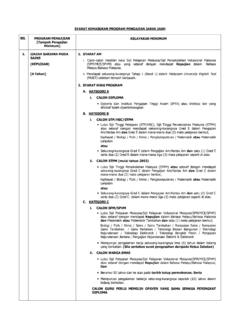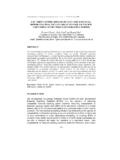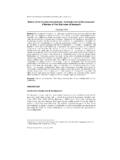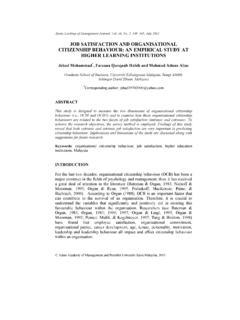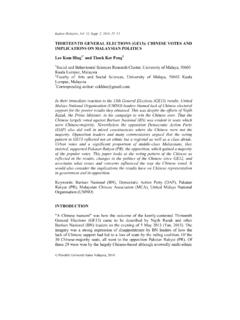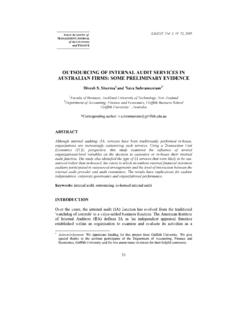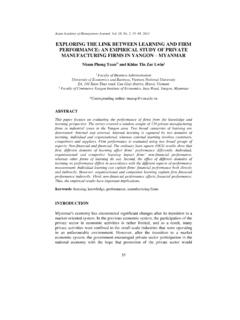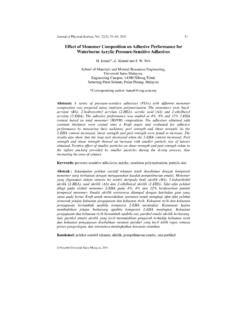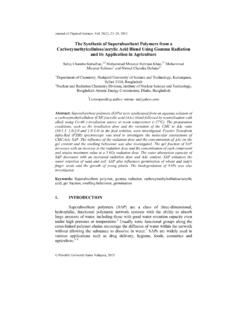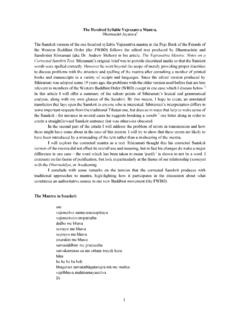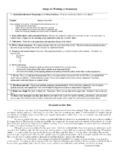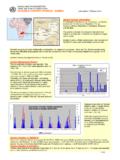Transcription of UNFAIR DISMISSAL FOR AUSTRALIAN WORKERS: THE …
1 Asian Academy of Management Journal, Vol. 20, No. 1, 147 164, 2015 Asian Academy of Management and Penerbit Universiti Sains Malaysia, 2015 UNFAIR DISMISSAL FOR AUSTRALIAN WORKERS: THE HUNDRED-YEAR JOURNEY Kim Southey School of Management and Enterprise, Faculty of Business, Education, Law and Arts, University of Southern Queensland, Toowoomba Queensland 4350 Australia E-mail: ABSTRACT This paper examines the journey Australia traversed in the development at of the UNFAIR DISMISSAL protections it provides the majority of its workers, since the nation's Federation in 1901.
2 Historically, the country's Constitutional "heads of power" were intended to prohibit the federal government from regulating individual aspects of the employment relationship. Over time, such interpretations of the constitutional powers were challenged by governing parties, resulting in the modern-day, "national" UNFAIR DISMISSAL protections afforded to the majority of workers. The journey Australians traversed during the architecture of their current UNFAIR DISMISSAL legislation provides a lesson on a government's ability to conjure significant influence on individual arrangements between management and workers.
3 Despite Australia's participation in the worldwide, neoliberal push to deregulate labour markets, the protection of workers from UNFAIR DISMISSAL is an explicit matter in the employment relationship attracting increased regulation through industrial legislation. This paper culminates in reporting the consequences facing employers who improperly administer dismissals and how employers can take steps to mitigate such risks. Keywords: UNFAIR DISMISSAL , neoliberal termination of employment, industrial legislation, labour market INTRODUCTION Legal protection against the unjust termination of employees from their jobs has held significant prominence in Australia's industrial landscape, particularly during the past thirty years.
4 In Australia, " UNFAIR DISMISSAL " refers to the termination of an employee's service without the employer exercising due care for the worker 's right to procedural justice. Such termination also occurs when a DISMISSAL reflects a disproportionate application of the employer's prerogative to terminate the employment relationship. This paper examines the crafting of UNFAIR DISMISSAL protections covering AUSTRALIAN workers by successive federal Kim Southey 148 governments. The past 30 years of these developments reflect a time that, curiously, coincides with a period of neoliberal reforms that characteristically deregulated the employment relationship.
5 The coverage of the current protections is broad-ranging, with most AUSTRALIAN employers held to legislative requirements when they terminate a worker 's employment contract due to misconduct or underperformance, or during times of redundancy. As a result, managers and business owners must approach the DISMISSAL of an employee with a rigid application of distributive and procedural justice if they wish to avoid an UNFAIR DISMISSAL claim that has the potential to escalate to binding arbitration.
6 The issue of whether a person can lose his or her job due to arbitrary or UNFAIR DISMISSAL is a matter of societal interest as it cuts to the core of justice and the rights of people to be "free from arbitrary and oppressive treatment, whether at the hand of government or private persons" (Wheeler & Rojot, 1992, p. 3). The arbitration of termination of employment processes, as it now exists under AUSTRALIAN legislation, "introduces a measure of public interest to a private right which would otherwise be regulated only by the common law" (Donaghey, 2006, p.)
7 6). This government regulation makes employment security the terrain of political interests in Australia, rather than the subject of free market forces associated with a prevailing, and socially tolerated, neoliberal philosophy. Employers have the right under contract law to dismiss a worker , yet the just execution of such rights is now being primarily judged by a federal tribunal with its authority provided by federal legislation. The current obligations that exist for employers have been strongly influenced by the results of the 2007 federal elections during which the AUSTRALIAN people gave majority support to a government that promised to play an active role in safe-guarding their employment security.
8 Yet how has Australia managed to evolve such extensive national protections given its historical preference for individual regulation by the states, and furthermore, in the face of other active neoliberal reforms? To address this question, the exposition in this paper traces Australia's journey in providing UNFAIR DISMISSAL protections in three sections. The first section proposes that the increased UNFAIR DISMISSAL regulation is surprisingly inconsistent with the typically neoliberal philosophies of the government regulations, perhaps due to Australia's uniquely expressed expectations of a "fair go all round".
9 Given that there is limited literature collating the historical development of this slice of Australia's industrial history, the second section considers how the notion of " UNFAIR DISMISSAL " was treated by legislators post-Federation. After this, the development of the UNFAIR DISMISSAL protections that started infiltrating the industrial relations system in the early 1980s is closely examined. From this point forward, Australians experienced the conservative neoliberal reforms of the Hawke and Keating Labor government era; followed by the radical neoliberal UNFAIR DISMISSAL : Australia's 100-Year Journey 149 reforms of the Howard Liberal-National Coalition government; concluding with the current state of affairs resulting from more temperate neoliberal revisions by the Rudd Labor government.
10 The final section provides insights about the features of the current, national system available to workers for claiming UNFAIR DISMISSAL and evidence of their impact on employers. Australia's Political Parties The design of the UNFAIR DISMISSAL legislation in the latter half of the 20th century has depended heavily on the policy packages of the political party in power. Before progressing further, readers unfamiliar with Australia's political parties may benefit from a brief explanation of the major parties that shaped the DISMISSAL protections.

